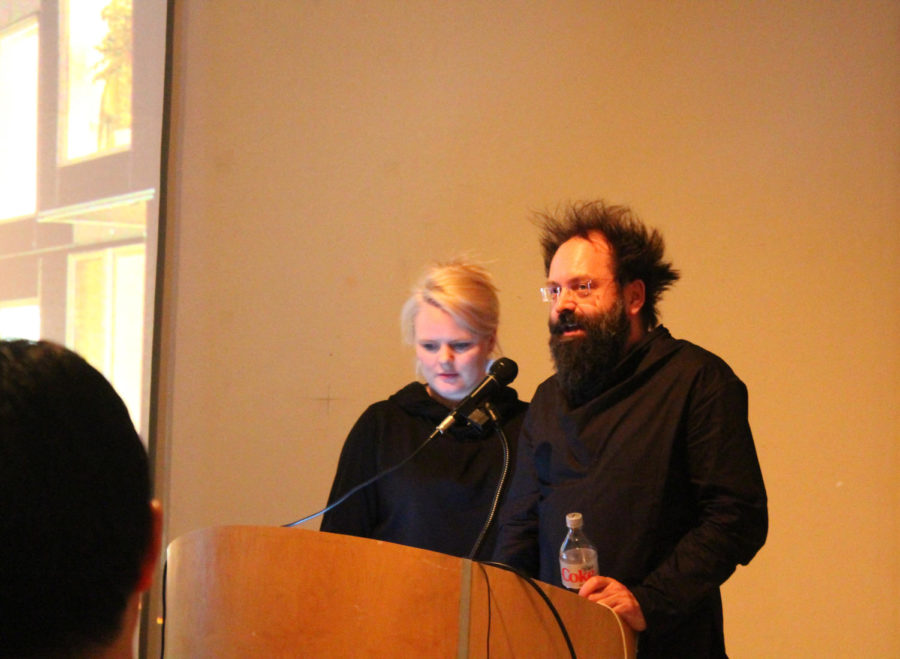Canadian architecture firm discusses design in the Midwest
Alexandra kelly/Iowa State Daily
Sasa Radulovic and Johanna Hurme from 5468796 Architecture discuss previous projects they have worked on during their lecture Feb. 15. They highlighted the struggle of being creative while operating within the margins.
February 15, 2017
The status quo is never easy to change.
Johanna Hurme and Sasa Radulovic discussed Wednesday about how to go about changing the status quo in regard to architecture at Iowa State.
The two are the founders of an architecture firm, 5468796 Architecture, which began in 2007 Winnipeg, Canada. Their discussion focused on a single theme: they believe students and future architects can shape design.
Hurme began the talk by comparing the similarities of Winnipeg to cities in the Midwest.
One of their main points was to show how in many of their designs, they have tried to cut down on interior space in order to expand exterior space.
“It’s about the stuff that happens between buildings,” Hurme said.
The firm believes by doing this, it can offset a trend in much of the United States in the design of apartment and condo buildings, where the living space is cramped, leaving little room for social gatherings.
“There is this Finnish word, ‘piha,’ which sort of means collective outdoor space, and as kids we would say we were from the piha, not the building, and we wanted to impose that onto people,” Hurme, who is from Helsinki, Finland, said.
A theme that Hurme and Radulovic also discussed was the idea of hyper-rationalism in architecture.
“We often get accused of doing things for the sake of their aesthetic, but often that way is the best way to do it and [it] becomes necessary,” Hurme said.
Radulovic presented a project they worked on that exemplified this thought. Their firm designed an elevated, circular condo building, with two stories of living space. Hurme mentioned that while building an elevated condo may seem irrational, it ended up being the most efficient way for the building to come to existence.
The architects also spent time discussing the business side of their firm and architecture in general.
“It’s our [architects’] responsibility to know our value, so that we know when we should work for free, or when we should be paid, and how much,” Hurme said.
Hurme advised students to avoid putting themselves into the two common boxes — the corporate architect and the struggling designer architect — and to be successful in whatever way they are able to.
This facet of the discussion is what stood out to senior architecture student Amanda Hoefling.
“A lot of the architects that come talk about their projects, but fail to talk about the business side, so I absolutely love how they mentioned that, because that’s real life,” Hoefling said.
One of the most important topics Hurme and Radulovic talked about was the ability for anyone to make an impact, even in smaller areas such as Winnipeg, or even Ames and Des Moines.
Radulovic said they believe many of their designs have had impacts in their community on social, environmental and economic levels. They have been able to be who they want to be and have success.
“One thing that comes from the reality of living in a city with a smaller population is that the feedback you receive from users and people familiar with your project is very quick and direct,” Radulovic said.
Throughout the lecture, the pair of architects stressed the importance of staying true to oneself and the ability each design student in the room had to impact the world. It was their belief as well, that the opportunity for impact was greatest by “practicing architecture in second and third cities.”
“Don’t abandon the place, make something out of it,” Hurme said.

















